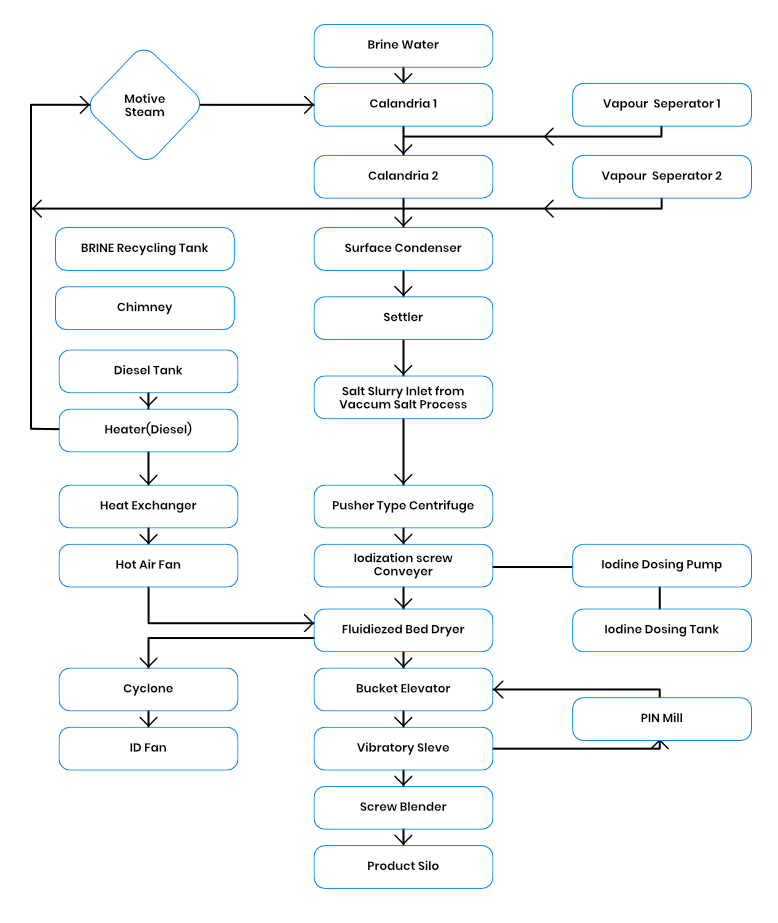Pure Vacuum Salt Plant (PVD)
Vacuum technology is becoming increasingly important within physics due to its several applications. Pure Vacuum Dried Salt has wide industrial applications. Find the latest and energy-efficient PVD plant with Shriram engineering. PVD salt is widely used in the textile industry, highly recommended for fabric dyeing as it helps drive the dye out of the solution and onto the fibre.
PVD Process

PVD Process Description
The process involves dissolving salt in water and making a flooded solution of salt. The flooded brine is pumped out to a brine clarifier, where the insoluble settles at the bottom of the clarifier and a clear brine solution is taken to a brine tank. In the brine tank required chemicals are added to precipitate out magnesium and calcium salts present along with the salt. The brine is then filtered and taken to the final brine tank. From this tank saturated brine is fed to the continuous evaporation plant where crystallization takes place and slurry is pumped out to a concentrate tank. This salt slurry is then pumped to a hydro-cyclone battery to get a slurry concentration up to 50-60%.
This slurry is fed to a centrifuge, and from the centrifuge salt cakes with 4-5% moisture comes out. The salt with 4-5% moisture is fed to a fluid bed dryer through a screw conveyor where the iodization is completed. In the Vibro Fluid Bed Dryer, the salt is fluidized by hot and atmospheric air for drying and cooling the salt. The salt is then taken through a bucket elevator to a sieving machine. The oversize particles are collected and sent for re-dissolving in the final brine tank.
To the crystallized salt is then added the free-flowing agent in a screw mixer and finally sent to a storage silo.
The salt packaging is done from the silo by an FFS machine in 1 kg. Packs or it can be packed in 50 kg bags as per requirement.
